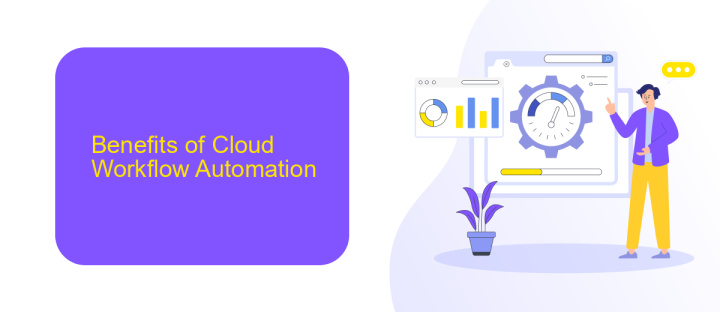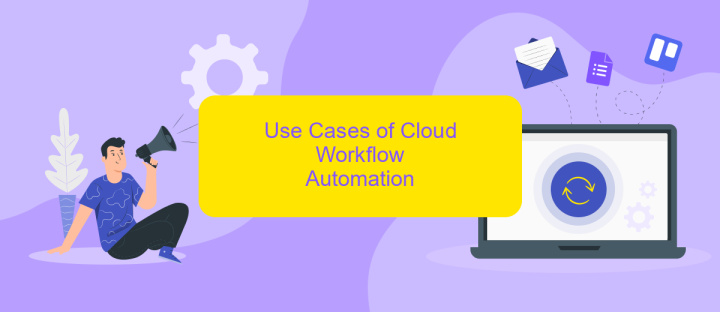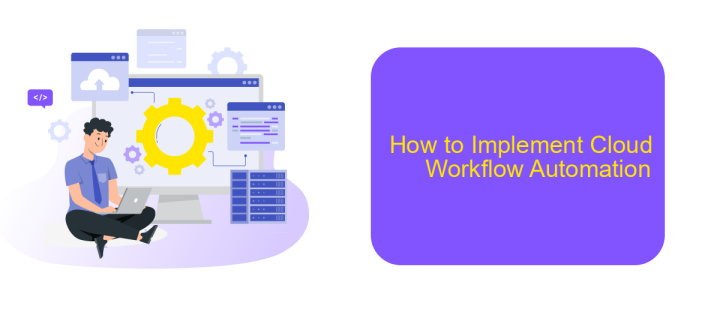Cloud Workflow Automation
In today's fast-paced digital landscape, cloud workflow automation is revolutionizing the way businesses operate. By streamlining processes and eliminating manual tasks, it enhances efficiency, reduces errors, and accelerates project timelines. This article explores the transformative power of cloud workflow automation, its key benefits, and how organizations can leverage this technology to stay competitive and drive innovation.
Key Concepts
Cloud Workflow Automation is a transformative approach that enables businesses to streamline and optimize their processes through the cloud. By automating repetitive tasks, organizations can improve efficiency, reduce errors, and save valuable time.
- Integration: Seamlessly connect various applications and systems to work together.
- Scalability: Easily scale operations up or down based on demand.
- Real-time Monitoring: Track workflows and processes in real-time for better decision-making.
- Flexibility: Customize workflows to fit specific business needs.
- Cost Efficiency: Reduce operational costs by minimizing manual intervention.
Services like ApiX-Drive enable businesses to set up integrations effortlessly. With ApiX-Drive, users can connect multiple applications without needing extensive technical knowledge, ensuring that data flows smoothly between systems. This not only enhances productivity but also ensures that workflows are consistent and reliable.
Benefits of Cloud Workflow Automation

Cloud workflow automation significantly enhances operational efficiency by streamlining repetitive tasks and reducing manual intervention. This results in faster processing times and minimizes the risk of human error, leading to improved accuracy and consistency in business processes. Additionally, automated workflows facilitate better resource allocation, allowing employees to focus on more strategic, value-added activities rather than mundane tasks.
Another key benefit is the ease of integration with various tools and systems. Services like ApiX-Drive enable seamless connectivity between different applications, ensuring smooth data flow and synchronization. This not only simplifies complex workflows but also enhances collaboration across departments. Furthermore, cloud-based solutions offer scalability and flexibility, allowing businesses to adapt quickly to changing demands and scale operations without significant infrastructure investments. Overall, cloud workflow automation drives productivity, fosters innovation, and provides a competitive edge in the digital landscape.
Use Cases of Cloud Workflow Automation

Cloud workflow automation streamlines various business processes by integrating and automating tasks across multiple platforms. This technology enhances efficiency, reduces manual errors, and allows teams to focus on more strategic activities.
- Order Processing: Automate order entries, invoicing, and shipping notifications, ensuring a seamless flow from purchase to delivery.
- Customer Support: Integrate CRM systems with support platforms to automatically route tickets, update customer records, and trigger follow-up actions.
- Marketing Campaigns: Schedule and automate email campaigns, social media posts, and lead nurturing activities to maintain consistent engagement with your audience.
- HR Processes: Streamline onboarding, leave management, and payroll processing by automating repetitive tasks and ensuring compliance.
- Data Integration: Use tools like ApiX-Drive to connect different applications, enabling seamless data transfer and synchronization across your business ecosystem.
Implementing cloud workflow automation not only saves time but also improves accuracy and scalability. By leveraging services like ApiX-Drive, businesses can easily set up integrations and automate complex workflows without extensive technical expertise, driving overall productivity and growth.
How to Implement Cloud Workflow Automation

Implementing cloud workflow automation can significantly enhance the efficiency and productivity of your business processes. The first step is to identify the repetitive tasks and workflows that can be automated. This often involves analyzing your current processes and pinpointing areas where automation can save time and reduce errors.
Once you have identified the tasks to automate, the next step is to choose a suitable cloud-based automation tool. There are various options available, such as ApiX-Drive, which allows you to integrate different applications and automate data transfers effortlessly. Selecting the right tool will depend on your specific needs and the complexity of your workflows.
- Identify repetitive tasks and workflows
- Choose a suitable cloud automation tool (e.g., ApiX-Drive)
- Set up integrations between your applications
- Configure automation rules and triggers
- Test and refine your automated workflows
After setting up the integrations and configuring the automation rules, it's crucial to test your workflows to ensure they work as expected. Regularly monitoring and refining these workflows will help you adapt to changes and continuously improve your automated processes. By leveraging tools like ApiX-Drive, you can seamlessly integrate various applications and enhance your cloud workflow automation.
Best Practices for Cloud Workflow Automation
Effective cloud workflow automation begins with a thorough understanding of your processes. Identify repetitive tasks that can be automated and map out the workflow to ensure clarity. Utilize tools like ApiX-Drive to seamlessly integrate various applications and services, reducing manual effort and minimizing errors. Establish clear objectives and key performance indicators (KPIs) to measure the success of your automation efforts. Regularly review and optimize workflows to adapt to changing business needs and technological advancements.
Security and compliance are crucial in cloud workflow automation. Ensure that all automated processes adhere to industry standards and regulations. Implement robust authentication and authorization mechanisms to safeguard sensitive data. Additionally, maintain detailed logs of automated activities for auditing and troubleshooting purposes. Invest in training for your team to keep them updated on best practices and new tools. By following these guidelines, you can maximize the efficiency and reliability of your cloud workflow automation.


FAQ
What is Cloud Workflow Automation?
How can Cloud Workflow Automation benefit my business?
What types of tasks can be automated using Cloud Workflow Automation?
How do I get started with Cloud Workflow Automation?
Is Cloud Workflow Automation secure?
Strive to take your business to the next level, achieve your goals faster and more efficiently? Apix-Drive is your reliable assistant for these tasks. An online service and application connector will help you automate key business processes and get rid of the routine. You and your employees will free up time for important core tasks. Try Apix-Drive features for free to see the effectiveness of the online connector for yourself.

